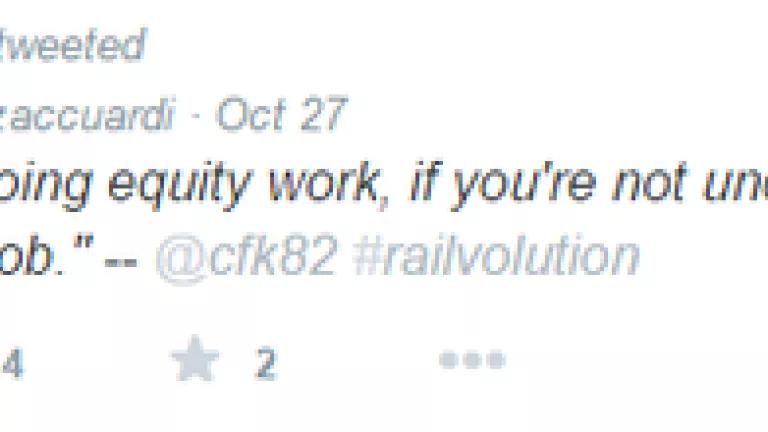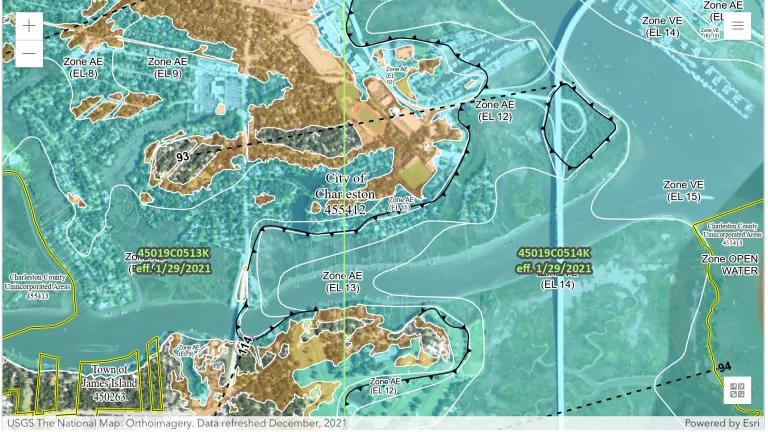
Mobility and access are two buzzwords in the transportation world right now, and they sound pretty good - like cool pathways to new and exciting ways of living and getting around in our thriving and bustling cities. But, folks, we have a problem.
Luckily, what I heard from leading representatives of public, private, for-profit and non-profit transportation and planning groups and agencies at the Rail~Volution conference in Dallas this week heartens me. It's clear after a plenary session I moderated that most of us in this sphere understand two things of fundamental importance:
1) Old transportation and new transportation must sync goals and technology to bring a new vision for life in cities, and 2) low-income and communities of color are important stakeholders in that vision.
Combined, that understanding can help us get past a major issue in transportation - image. It's the notion that the elite have access to new mobility options while the rest of us wait for buses and trains on slow and inefficient schedules or are stuck in cars on long commutes.
The esteemed people on my panel did their best to convince our audience of several hundred and me otherwise. The discussion was passionate, lively and quotable - as evidenced on the active Railvolution Twitter following:


Carniesha Kwashie of the Mayor's Fund of Philadelphia, who is in charge of the city's Better Bike Share Partnership, explained the enthusiasm she saw among low-income groups for bike sharing once the city sought input from the community.
"It's really important to make sure the people living in those communities have a say," she said, "that the people feel part of the process," including where bike-sharing stations should be located. "They know better than we do."
She challenged the audience to keep social equity at top of mind, and to have difficult conversations.
"When you're charged with social equity work and you're not uncomfortable, you're not doing your job," she said of her agency's efforts. "We see this as a living conversation."
The panelists saw their contributions to transportation as part of the future of a transportation system in which no single sector dominates and everyone benefits, providing answers not only to transportation problems but to overcoming barriers to social mobility - the ability to succeed in the world despite your income and where you live.
Emily Castor, director of transportation policy at Lyft, saw her company's innovation in ridesharing as part of that solution. She said there has been a "tidal wave" of outreach from transit agencies for partnerships.
"Lyft will never be competition for a train" that can operate with such a large capacity of riders and with predictable arrival times, she said. "What we can do on the equity side is help expand the catchment areas of rail stations" - that is, reduce the competition for housing near transit.
"That small physical footprint is the reason we see that pressure on the price of housing," she said. "When you can provide more flexible services that move as needed throughout a larger swath of a city to a lot of different residential neighborhoods, you can relieve that pressure."
Opportunity in low-income communities
But my question to the panel was, "How can we make sure we are making these options truly available to people who need them most?"
Justin Holmes, director of corporate communications and public policy at Zipcar, one of the original car-sharing options, sees expanding into underserved areas as the company's core mission.
"We were more associated with a service for people who choose to live a car-free lifestyle," he said. "What we've come to learn is Zipcar fits a need for those folks who don't have a choice to live a car-free lifestyle." He said working in tandem with local transit agencies has "allowed us to grow and extend that level of service that we provide to low-income communities."
Sean Walcott, associate in enterprise solutions at Ridescout, said payment systems are a barrier because people need multiple accounts and smart cards to use transportation, including transit and technology-driven ride-sharing. "We think that by bringing it all together and having a single account that you're really going to see an increase in mobility," including for the low-income, he said.
Art Guzzetti, vice president for policy at the American Public Transit Association, pointed out that about 5 percent of people use transit, so there is a huge market to be tapped. "Let's think of the strategies that get to that 95 percent. There is going to be some challenges ... but that is equity. If we're providing car-free options that work for everybody, that is a more equitable world and a more environmentally sustainable world."
Transit, said Guzzetti, will continue to be the "trunk" or anchor in the big picture as it serves as a driver for development in cities.
"Transit is going to come out stronger," he said, because cities are capitalizing on its synergy with other ride-sharing options. "Can we come up with an integrated system? I think we can."
Ease-of-use for customers, affordability, mobility, profitability - and a huge move forward in terms of fighting carbon pollution and using natural resources wisely - it's a world of which I want to be a part.
As Carolyn Flowers, senior advisor at the Federal Transit Administration, said in a speech setting the stage for our panel, the future is one of mobility on demand for everyone using innovation, opportunity and inclusiveness.
"Fractured, divided communities are by definition not sustainable," she said. "If we don't inhabit the same spaces ..., how can we understand the challenges of one another?"



